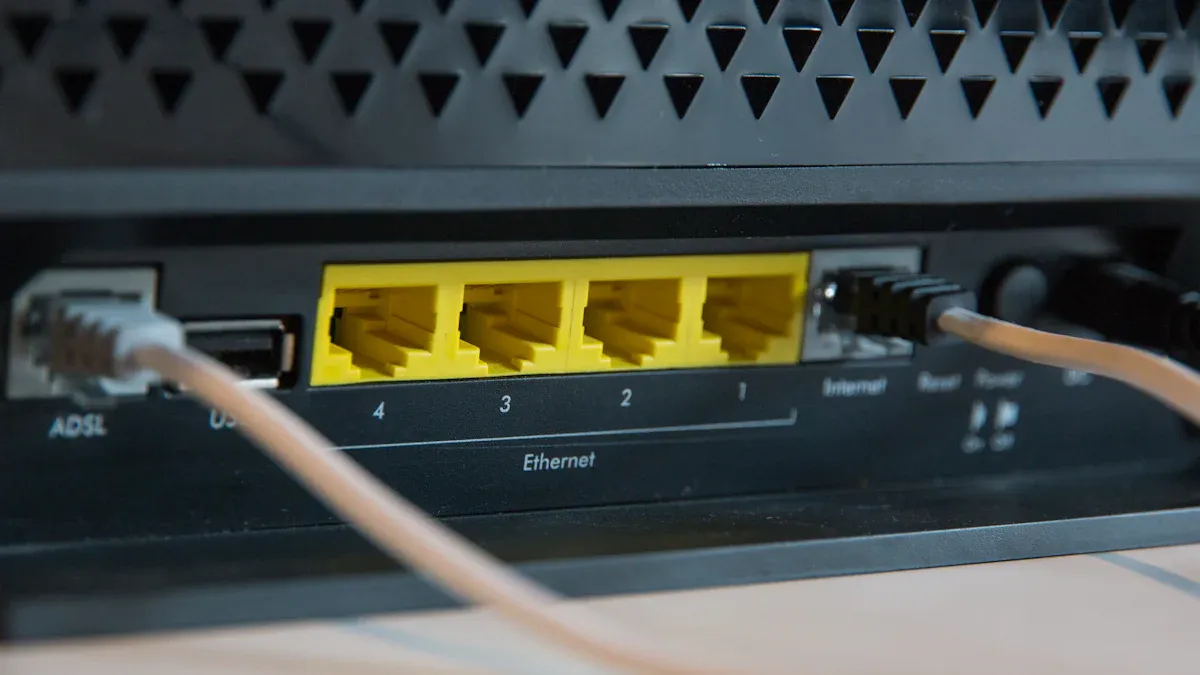
You can find the best OpenWRT router for your needs. A great OpenWRT LTE router delivers optimal performance. First, check your internet speed and usage. Next, confirm carrier and LTE band compatibility with OpenWRT. Finally, choose hardware for top performance. The market for 4G and 5G routers is growing fast, making it a great time to upgrade your 4G setup for better performance. Finding the best 4G router or best LTE router ensures excellent 4G performance with your OpenWRT device.
The global 4G and 5G router market shows significant growth, highlighting the demand for strong performance.
Métrica Value (2024) Projected Value (2033) Global 4G & 5G Routers Market Size USD 12.5 billion USD 30.7 billion
This growth affects your choices for a 4G OpenWRT system. Your new OpenWRT device will power your 4G LTE connection.
Step 1: Assess Your Internet Needs and Use Case
Before you choose a device, you must first understand your own internet habits. Your daily activities directly impact the kind of hardware you need for optimal performance. A powerful OpenWRT router is only as good as its ability to meet your specific demands.
Determine Your Speed and Data Requirements
First, think about how you use the internet. Are you a remote worker on constant video calls, a gamer who needs low latency, or someone who just streams movies? Your answers will define your required speed and throughput. An OpenWRT setup gives you control over your 4G connection’s performance.
Consider these general speed tiers for your 4G plan:
- 300–600 Mbps: This range works well for individuals or small households. It supports video conferencing, cloud tools, and streaming on a few devices.
- 1 Gig: A family or professional who needs fast, consistent internet will benefit here. This speed handles large file uploads and streaming across many devices.
- 2.5+ Gig: This is for high-demand users. It offers maximum performance for home businesses or smart homes with many connected gadgets.
Remote work especially increases your upload demand. You need at least 10 Mbps upload speed for basic 4G video calls. Your video conferencing tools also have specific needs.
| Video chat application | Minimum speed | Recommended speed |
|---|---|---|
| Zoom | 600Kbps | 3.8Mbps |
| Google Meet | 2.6Mbps | 4.0Mbps |
| Slack | 200Mbps | 2Mbps |
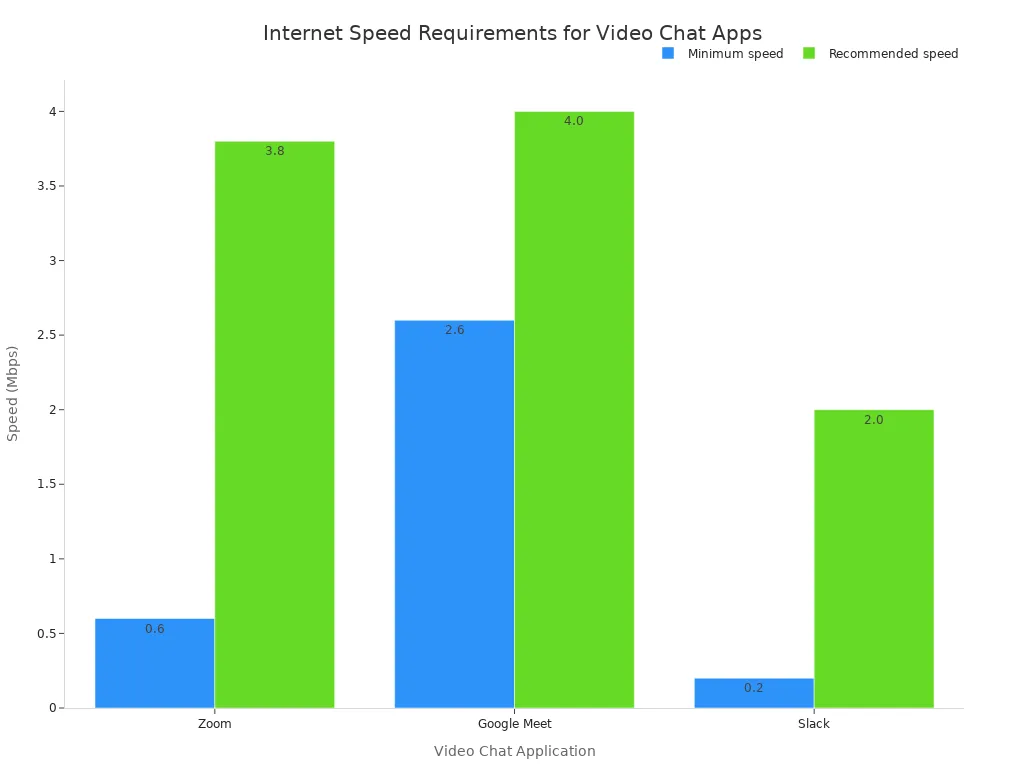
Understanding these numbers helps you choose a 4G LTE router and data plan that won’t cause bottlenecks. Your OpenWRT system’s performance depends on this foundation.
Match the Router to Your Environment
Next, consider where you will use your OpenWRT router. Your physical environment plays a big role in your choice.
Consejo: A router for a home office has different needs than one for an RV. 🚐
A stationary setup at home or in an office can use a larger device with more Ethernet ports and powerful antennas. In contrast, the best 4g router for mobile use in an RV or boat must be compact, durable, and able to handle varying power sources. A stable 4G LTE connection is critical in both scenarios, but the hardware to achieve it differs. Your OpenWRT device choice should reflect your environment to ensure reliable performance.
Step 2: Ensure Carrier and Band Compatibility with OpenWRT

After defining your needs, you must check for carrier compatibility. A router’s modem must connect to your mobile carrier’s specific 4G network bands. Without this match, even the best 4g router will have poor performance. Ensuring compatibility with OpenWRT is key to a stable connection.
How to Find Your Carrier’s LTE and 5G Bands
Mobile carriers transmit their 4G signals on different frequency bands. Some bands offer long-range coverage, while others provide high-speed capacity in cities. You can find your local carrier’s bands using websites like CellMapper.net. This information helps you choose a device that works well in your area.
Different LTE bands serve different purposes for your 4G connection.
| LTE Band | Frequency | Primary Use Case |
|---|---|---|
| Long-Range Coverage | ||
| Band 20 | 800 MHz | Excellent coverage and building penetration, ideal for rural and urban areas. |
| Band 28 | 700 MHz | Broad coverage and good building penetration, widely used in rural areas. |
| Balanced Coverage & Capacity | ||
| Band 3 | 1800 MHz | Balances coverage and capacity, common in urban and suburban areas. |
| High-Speed Capacity | ||
| Band 7 | 2600 MHz | Higher data rates and capacity, suitable for densely populated areas (shorter range). |
| Band 38 | 2600 MHz TDD | High capacity and data rates, used in urban hotspots and for network densification. |
| Band 40 | 2300 MHz TDD | High-speed data services, good capacity but limited range. |
Match Modem Bands to Your Carrier for a Fast Connection
The modem inside your openwrt lte router determines your speed. Modems are rated by LTE categories (like Cat 6 or Cat 12). Higher categories support faster speeds and better technology, like carrier aggregation. This feature combines multiple 4G bands for a significant performance boost. Your OpenWRT setup can achieve optimal performance when the modem matches your needs.
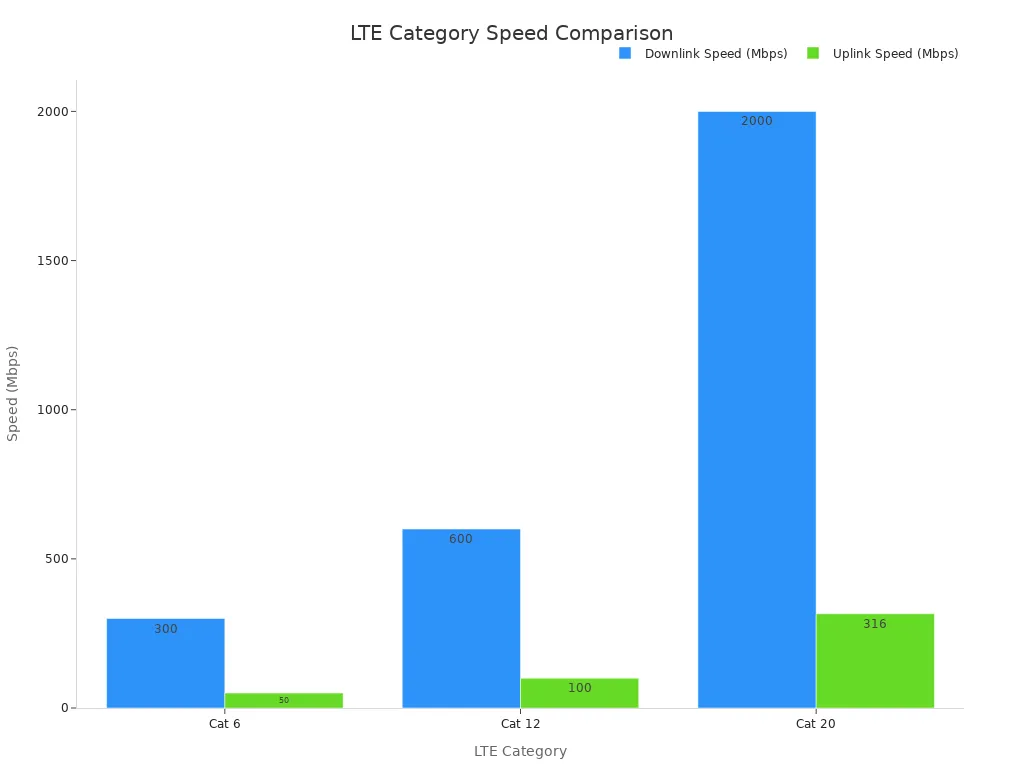
A modem that supports more of your carrier’s 4G bands will deliver better overall performance. This is crucial for maintaining a strong 4G connection.
Check IMEI and Data Plan Compatibility
Nota: Always check your device’s IMEI on the carrier’s website before buying a plan. This step confirms compatibility with OpenWRT and the network.
Carriers use a device’s IMEI number to identify it. Many carriers do not officially allow phone SIM cards in routers. Using one may violate their terms and could lead to your service being canceled. For the best 4g router experience, you should use a data-only plan designed for hotspots or routers. This ensures your OpenWRT device provides reliable 4G performance without risking your account.
Step 3: Select the Right Hardware for the Best LTE Router Performance
Now that you know your needs and carrier details, you can focus on the hardware. The physical components of your router are the foundation of its performance. Choosing the right CPU, RAM, modem, and ports will ensure your device can handle your demands without slowing down. This step is crucial for building the best lte router for your specific situation.
CPU and RAM: The Router’s Brain
Think of the CPU and RAM as your router’s brain and short-term memory. The Central Processing Unit (CPU) handles all the tasks, from managing network traffic to running extra software. A faster CPU can handle more complex tasks, like running a VPN or managing many connected devices. Random Access Memory (RAM) holds the data for the tasks your router is currently working on. More RAM lets you run more services on OpenWRT at the same time.
For a basic OpenWRT setup, you should look for a device with at least:
- 16 MB de memoria flash (for storing the OpenWRT firmware)
- 128 MB of RAM
However, if you plan to install packages like AdGuard Home for ad-blocking or Samba for file sharing, you will need more power. These services consume significant memory and can overwhelm a low-spec router, leading to poor performance.
A real-world example shows why more RAM matters. One OpenWRT user found their router’s RAM usage jumped to 97% with a USB drive and Samba file sharing active. AdGuard Home was a major cause of the high memory use. Even after turning off some services, memory usage remained high, showing that powerful software needs powerful hardware.
To avoid bottlenecks, choose a router with a capable CPU and ample RAM for the OpenWRT packages you want to run. This ensures smooth and reliable operation.
The LTE Modem: Your Key to Speed and Stability
The LTE modem is the heart of your 4G connection. It is the component that communicates with the cell tower. The modem’s quality and features directly determine your internet speed and throughput. Modems are classified into different LTE Categories (or “Cat”). A higher category number means the modem supports faster speeds and more advanced technologies.
| LTE Category | Velocidad máxima de descarga | Lo mejor para |
|---|---|---|
| Cat 6 | 300 Mbps | General home use, streaming, and browsing. |
| Cat 12 | 600 Mbps | Power users, multiple 4K streams, and large downloads. |
| Cat 18 / Cat 20 | 1-2 Gbps | Future-proofing, demanding business use, and achieving the absolute fastest 4G speeds. |
Top-tier modems also support Carrier Aggregation (CA). This technology allows the modem to combine multiple 4G bands at once, creating a wider “pipe” for data. The result is a much faster and more stable connection. Investing in a good modem is the single most important step for achieving optimal performance with your openwrt lte router. A better modem makes for a better 4G experience.
Antennas and Ports: Your Physical Connections
Your router’s physical connections are just as important as its internal components. Antennas and ports dictate how your router interacts with the outside world and your local devices.
Antennas 📡 Your router needs antennas to send and receive the 4G signal. Some routers have internal antennas for a sleek look, but the best lte router models often feature external antenna ports. External antennas give you a major advantage in areas with weak signals. You can position them for the best reception or even connect a larger, directional outdoor antenna to pull in a distant signal. This gives you more control over your connection quality.
Puertos The Ethernet ports on your router provide fast, stable wired connections for your devices. Most routers come with one WAN (internet) port and four LAN ports. This setup lets you connect multiple computers and other devices directly to your network. For the best 4g router experience, you should consider both the number of ports and their speed.
While standard 1 Gigabit ports are fine for most uses, high-performance setups benefit from faster 2.5G or 10G ports. You can connect devices like:
- Network Attached Storage (NAS): For fast file transfers and media streaming across your network.
- High-End PCs: Modern computers often have 2.5G Ethernet ports for faster downloads and gaming.
- Network Switches: To expand your high-speed network to even more devices.
Choosing a router with the right number and type of ports ensures your entire network can take full advantage of your fast 4G connection. This is a key part of building the best 4g router setup with OpenWRT.
Finding the Best OpenWRT Router: Popular Models
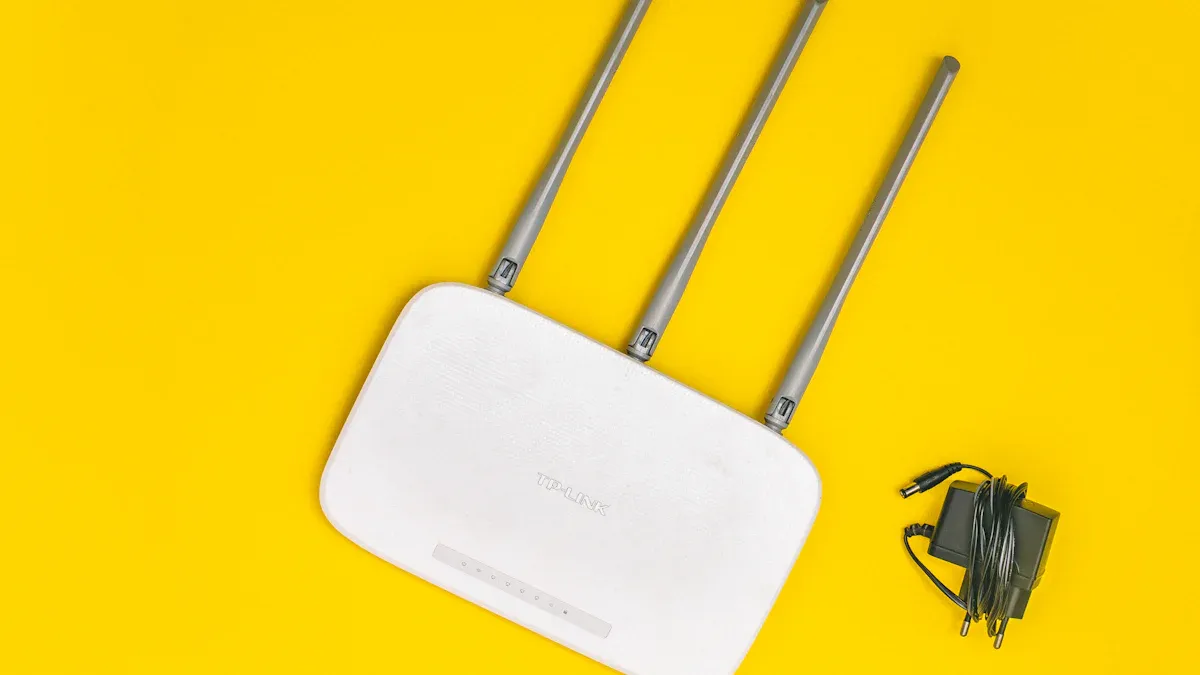
With your needs defined, you can now explore specific devices. The market offers many top OpenWRT routers for different budgets and use cases. Finding the best OpenWRT router involves matching a model’s strengths to your goals for performance.
High-Performance Routers for Home and Power Users
If you demand maximum performance, you need a router with a powerful CPU and plenty of RAM. These components are essential for running advanced OpenWRT services without slowdowns. Power users often need specific features for top-tier performance.
- Hardware for Performance: You benefit from strong CPUs for handling tasks like VPNs and at least 4GB of RAM for running multiple services.
- Software for Customization: Operating systems like OpenWRT give you full control to customize your router’s functions.
- Optimización del rendimiento: Features like hardware offloading speed up your network traffic for a smoother experience.
The best lte router for power users often has robust hardware. Here are some popular models known for their excellent OpenWRT support and strong 4G performance.
| Modelo de router | CPU | RAM | Notas |
|---|---|---|---|
| Belkin RT3200 | Dual-core ARMv8 1.35GHz | 512MB | Wi-Fi 6 capable, hardware flow offloading |
| GL.iNet Flint (GL-AX1800) | Quad-core Qualcomm IPQ6000 | 512MB | Wi-Fi 6, runs a forked OpenWRT |
| NanoPi R6S | Rockchip RK3588S SoC | 8 GB | Tiny board, 2x 2.5GbE ports, runs a forked OpenWRT |

The Best 4G Router for RV and Mobile Use
Life on the road requires a router built for mobility. The best 4G router for an RV must handle unique power situations and provide a stable 4G connection.
For mobile use, flexible power is key. Your router should run on 12V DC power from your vehicle’s battery system. This is a critical feature for off-grid 4G internet.
Many top OpenWRT routers are designed for this purpose. They ensure you stay connected wherever you travel.
| Nombre del modelo | Tipo | Características principales |
|---|---|---|
| ConnecT 2.0 4G+ | Outdoor RV 4G Router | All-in-one 4G LTE, TV, and radio solution |
| Osprey | Ceiling RV 4G Router | Creates a connectivity hub; Starlink compatible |
| Aspen LTE | Indoor RV 4G Router | High-performance 4G with five Gigabit LAN ports |
Budget-Friendly Options like HUASIFEI and TP-Link
You do not need to spend a lot to get a great OpenWRT device. Brands like HUASIFEI and TP-Link offer affordable routers with solid 4G capabilities. These models provide a great entry point into the world of custom firmware. The best 4G router for a tight budget can still deliver reliable performance for everyday tasks.
| Brand | Modelo | Precios | Compatibilidad |
|---|---|---|---|
| HUASIFEI | WS1208V2 | $45-47 | OpenWRT |
| TP-Link | WDR6500 | $3.75-4.28 | OpenWRT |
| TP-Link | WTC181 | $9.20-10 | OpenWRT |
Key Considerations for Your OpenWRT LTE Router Setup
Choosing the right hardware is only part of the journey. You must also consider the software and accessories that unlock your router’s full potential. These key details ensure you get stable and fast 4G internet. Proper setup is essential for the optimal performance of your OpenWrt system.
Understanding Modem Firmware and Management
Your modem uses a protocol to communicate with your OpenWrt router. The two most common protocols are QMI and MBIM. QMI is a protocol from Qualcomm, while MBIM is an official USB standard. Many modems support both, and your choice can affect how you manage your 4G connection in OpenWrt.
| Característica | QMI (Qualcomm MSM Interface) | MBIM (Mobile Broadband Interface Model) |
|---|---|---|
| Origin | Qualcomm-specific protocol | Official USB standard |
| Soporte OpenWrt | uqmi | umbim |
| DHCP | Can support DHCP | Requires manual IP configuration |
For modern modems, the protocol choice does not greatly impact your internet speed or ping. The performance difference usually comes from the manufacturer’s implementation. Your main goal is to find what works best with your specific modem and OpenWrt setup for the best 4G performance.
The Role of External Antennas in Weak Signal Areas
In areas with a weak 4G signal, external antennas are a game-changer. They help your router capture a stronger, more reliable LTE signal. For the best results, you need to position your antenna correctly.
Consejo: Proper antenna placement can dramatically improve your connection quality and speed.
Follow these best practices for antenna installation:
- Place the antenna at least 5 to 10 feet above your roofline.
- Keep it at least 18 inches away from any metal surfaces.
- Ensure it has a clear, 360° view of the surrounding area.
- Stay at least 10 feet away from electrical power lines to avoid interference.
The cable connecting your antenna to the router also affects performance. Longer cables can cause signal loss. For example, a standard RG-58 cable should not exceed 25 feet. For longer runs, you will need a higher-quality cable like LMR-400.
Wi-Fi 5 vs. Wi-Fi 6: Which Do You Need?
Your router’s Wi-Fi standard determines how fast it can share your 4G connection with your devices. Wi-Fi 6 (802.11ax) is the newer standard and offers significant improvements over Wi-Fi 5 (802.11ac). It provides faster speeds and better performance in homes with many connected devices.
| Wi-Fi estándar | Goal Data Rate | Typical Maximum Data Rate |
|---|---|---|
| Wi-Fi 5 (802.11ac) | ~6.9 Gbps | 3.5 Gbps |
| Wi-Fi 6 (802.11ax) | 9.6 Gbps | 9.6 Gbps |
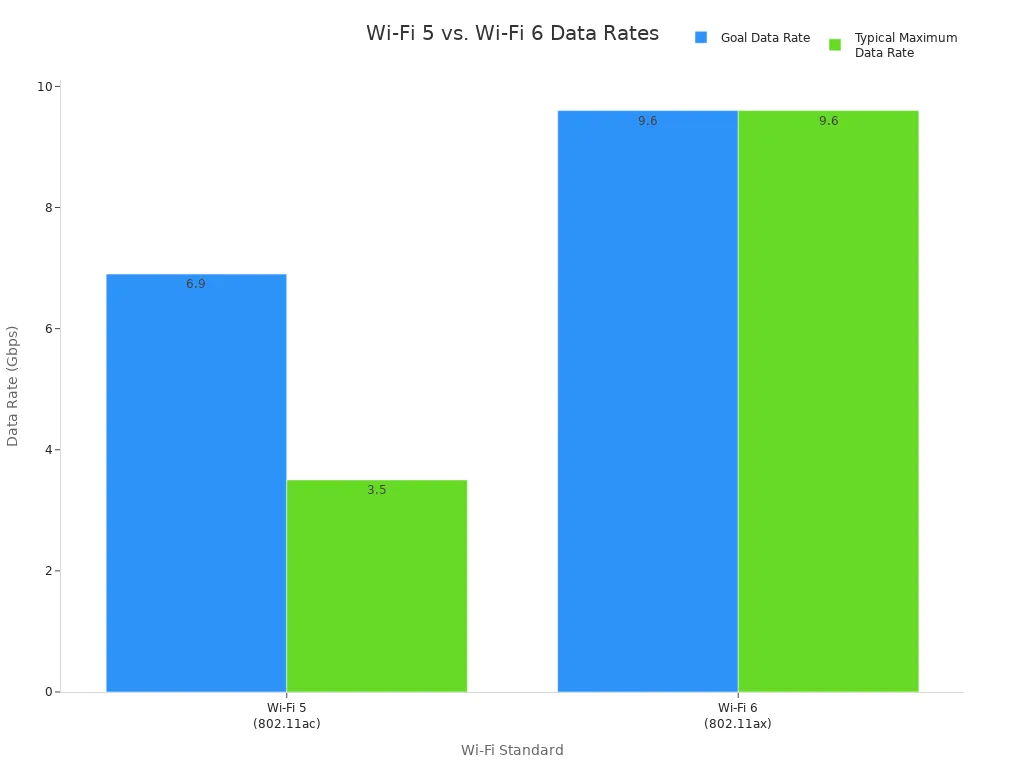
Wi-Fi 6 uses a technology called OFDMA. This feature allows your openwrt lte router to communicate with multiple devices at once more efficiently. This reduces lag and improves overall network performance, which is especially useful in a smart home. If you have many devices or want to future-proof your network, a router with Wi-Fi 6 is the better choice for your OpenWrt system.
You can now find the best 4g router for your needs. You defined your use case and checked compatibility with OpenWRT. You matched hardware to your 4g performance goals for optimal performance. A well-chosen openwrt lte router provides a reliable internet connection. Your OpenWRT setup gives you control over your 4g performance. This knowledge helps you find the best OpenWRT router and best lte router for your 4g needs, ensuring great performance with OpenWRT. You can now choose the best 4g router with confidence for your 4g performance with OpenWRT.
PREGUNTAS FRECUENTES
¿Qué es OpenWRT y por qué deberías usarlo?
OpenWRT is a free, open-source operating system for your router. You use it to unlock advanced features and gain full control over your network. It gives you more power than the standard software that comes with most routers, allowing for deep customization and improved performance.
Can you use any SIM card in an OpenWRT LTE router?
No, you should not use just any SIM card. Many carriers block phone SIMs in routers. You should always use a data-only plan designed for hotspots or routers. This ensures your service works correctly and avoids account suspension.
Do you need an external antenna for your 4G router?
You need an external antenna if your 4G signal is weak. It helps your router get a stronger, more stable connection. In areas with good signal, your router’s built-in antennas are often enough. An external antenna is a great tool for improving speed in rural locations.
What is the most important hardware for a fast LTE connection?
The LTE modem is the most critical component for speed. A modem with a higher LTE Category (like Cat 12 or higher) supports faster speeds and technologies like Carrier Aggregation. A better modem directly translates to a faster and more reliable internet experience.